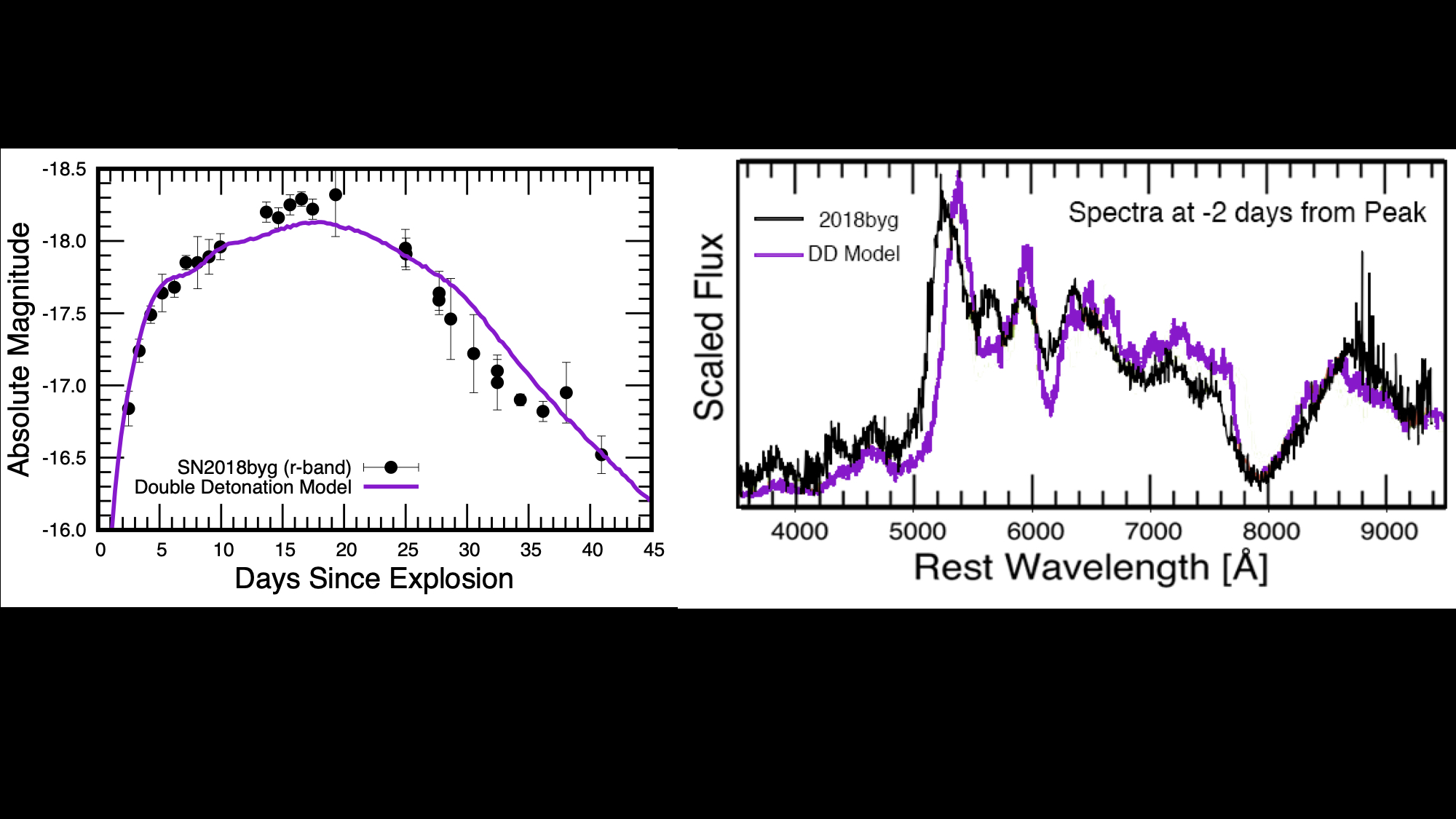Thick He Shell Double Detonations
Research | | Links: Public Models | Model Paper | Discovery Paper

My thick shell double detonation model (purple) compared to the first discovered candidate of this class (SN 2018byg). Both model and supernova show an early flux excess in their light curves and a spectrum that is heavily line blanketed by the ashes of the burnt helium shell.
Double detonation explosions triggered by thick helium shell ~0.1 Mo ignitions do not look like SNe Ia. My models predicted “smoking gun” signatures that would indicate a thick helium shell caused a double detonation: an early flux excess in the light curves due to radioactive material at the surface of the explosion, and a line-blanketed red spectrum at peak due to the opaque ashes of burned helium.
When I performed these simulations no such events had been observed. However, astronomers are discovering more SNe than ever before. Shortly after completing our models, my colleagues at ZTF discovered SN~2018byg, the first event that clearly displayed both of the predicted features. I worked to create a custom model to fit this event, shown above. The modeled light curve shows a good match to the magnitude of both the early flux excess (at ~5 days) and the peak luminosity (at ~17 days), and the synthetic spectrum at peak shows the ashes blanketing wavelengths less than 5000A as well as absorption features at the observed strengths and velocities. We conclude that SN 2018byg arose from a double detonation triggered by a thick helium shell,
Since the premier event, we have discovered several additional events consistent with thick helium shell double detonations: SN 2016hnk SN 2019yvq SN 2016dsg SN 2020jgb